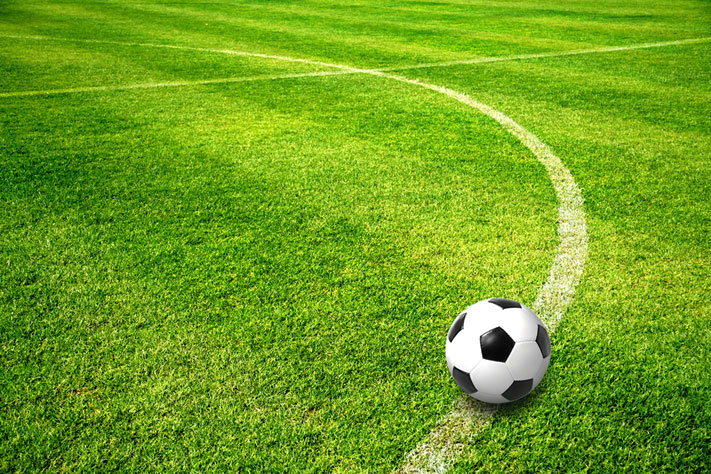
Throughout my life, I’ve had the chance of having the chance to play soccer on both turfs as well as grass as well, and if had to decide between the two I’d pick grass 100 times. I’m not the only one. Most soccer gamers would prefer playing play on the grass instead of turf without a doubt. doubt this is the reason why the top soccer leagues around the world and in Europe and elsewhere, are played on grass pitches that are natural grass pitches.
Then, why do soccer players choose grass instead of turf? The most significant reason is that of injuries: The strain on the ACL and other joints increase by 45 percent. Other important aspects like heat excessively and an unnatural bounce that occurs on the ball have a significant impact on how the ball bounces and performance in the sport on turf.
But, these are just one of the many things to be mentioned. Turf is not without its disadvantages it has benefits but the use of artificial grass pitches becomes more and more popular each day. We’ll look at the reasons for this and discover the reasons why it’s so crucial for all professional leagues of the top level to have a grass pitch that is a natural grass field for players.
The Soccer Ball Grass vs Turf Battle
Since artificial turfs first appeared this debate has existed. Many myths and beliefs are attributed to artificial turf that isn’t confirmed by anyone. But, the presence of turf fields has caused, not just soccer players, but athletes from different sports to disapprove of the spread of the use of turf fields.
As I was a teenager soccer player of the 21st century I was raised playing on artificial turf fields. They’ve been a “quick solution” that has led to a larger number of soccer fields throughout the country. It’s hard to find a clean, well-maintained naturally grass soccer pitch to play in today since the majority are turf pitches.
However, when you do locate the perfect natural grass field and you play on it, the experience will be completely different than playing with turf. Professional soccer player Sydney Leroux once said in an interview on “Vice Sports”: “The game is different, and the match is fake. You aren’t sure what the ball will bounce or roll. You’re running with cement”.
I believe that Sydney’s words reflect exactly what the professional soccer players feel playing on turf. It’s like playing another game that is played with a different pace which makes you more likely to be injured and needs to play under different conditions.
There’s a reason the top soccer teams in Europe are played exclusively with natural grass. The first time you see artificial grass at third division games perhaps. But most of the time, soccer athletes play on natural grass.
Additionally, it is important to be aware that the majority of World Cups in history has the possibility of being played on grass. There was only one exception and that occurred in the year 2015 WWC. There was plenty of contention over this event and we’ll talk more bit more in-depth about the event in the next article.
Within our area, North as well as Central America (CONCACAF) Our most prestigious leagues have had to struggle to design games entirely in natural grass fields. There is a large number of games that are played on turf in both MLS as well as the USL. The players who join soccer after playing in Europe such as Lampard, Pirlo, Ibrahimovic, Drogba, and David Beckham all argued against playing with fake grass, as they assert that it is totally different and potentially dangerous.
Nature-based grass is so essential that when European teams arrive for play in the USA in the preseason, one of their conditions is that they play in natural grass fields. Stadiums can put up an interim grass field on the top of their turf to ensure they can play. European soccer teams can play.
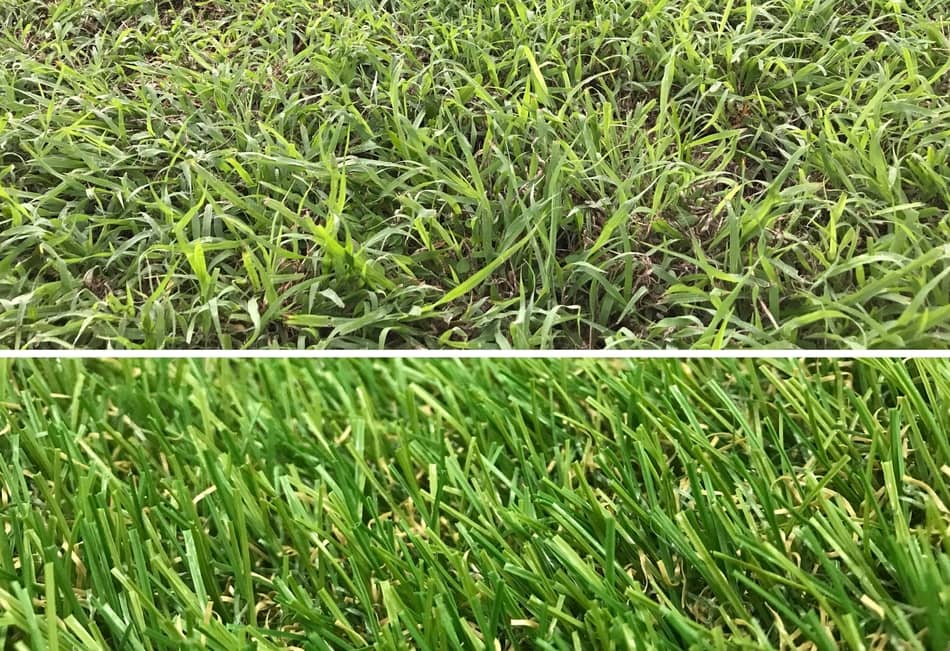
Smaller differences
A lot of experts and professionals in the field have developed the notion that, even when playing with artificial turf, the differences between two teams are less than the differences between two teams are. Meaning, that it’s difficult for each team to play at its highest level. It is reasonable because the bounce as well as the contact, passing, shooting, and every other aspect of the game is unique and more difficult to attain at the highest level when playing on turf.
The game played on turf is played with a greater velocity, which is the reason teams generally struggle to maintain control of the ball and the game like they would play on a natural grass field. If you’re unable to control the ball in the way you would like it to be and the strategy of the game breaks down and basically, you’ll see two teams chasing a ball with a flurry of speed in a messy match.
Contrasting to grass and grass, the ball moves according to how the players would like for it. It is a naturally soft bounce when compared to the turf. The ball glides across the grass at an ideal speed and makes it much easier for players to control it. Simply put, on the grass, soccer feels just like it should.
One of the best examples is a match that occurred in 2013. Real Madrid vs Xativa. It was a “Copa of Rey” match in which Europe’s largest team, Real Madrid, faced an inferior third division team on the artificial turf field. Real Madrid players and coaches claimed that it was not acceptable to play the match in such conditions.
To avoid injury, Real Madrid players changed their soccer cleats, and the coach started players off the bench. You would think that the players on the benches of a top team like Real Madrid could easily destroy the team of Xativa isn’t it? The match ended in a draw. I would say this can be a perfect example of in the case of an artificial turf field, it is difficult to play soccer at the highest quality, and the differences between teams are hardly any.
This is possibly the strongest and most convincing argument that a coach or player could make for playing with artificial turf.
Why are Turf Fields Becoming more Common?
Maintenance costs
If it’s evident to all grass fields are indeed far superior to turf fields then why do these fields become more and more popular. You’ve probably heard that keeping the natural grass area in healthy condition is a challenge and costly. The natural grass requires regular fertilization mowing, watering, and irrigation likely every day.
Let’s take for instance that the government plans to build a field or a soccer arena in the locality. If the field isn’t being utilized by a major club or for an accreditable event the most straightforward thing to do likely is to just put up the turf. That this way, they don’t need to employ people or purchase equipment to maintain the area in good order.
Instead, they put in the turf which, based on the weather conditions and quantity of use, can last for a significant amount of time. In the end, they can save cash and time on upkeep expenses. However, research has shown that it’s more expensive to maintain a turf soccer field (around 23,000 dollars per year) as opposed to the maintenance cost of a grass field. grass field (14,000 annually). The problem is that owners construct turf believing that it doesn’t require any maintenance in the first place, and after a few years of regular usage it is likely that the turf field is likely to be worse than when it was brand new.
The time of playing
Artificial turf is more tolerant to any weather condition. Extreme snow or rain can make natural grass develop problems with drainage, leading to end games. Artificial turf is not prone to this issue, since it is constructed from synthetic material. If you’re playing on a wet pitch, it can be a challenge, and I’ve written an article on 16 suggestions to play soccer during rainy conditions and still perform at a high level even in harsh conditions.
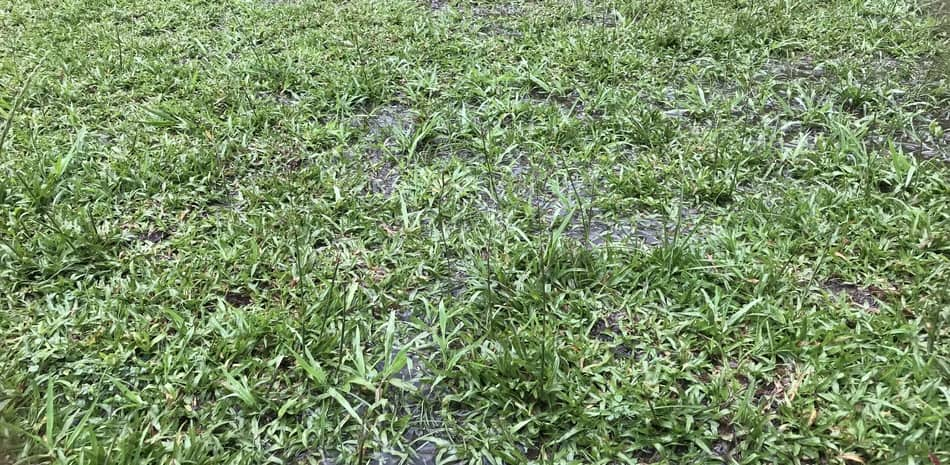
Natural grass after a few playing times will wear off and not be usable for another time. I can remember when I was in soccer training at my academy, where we had amazing facilities that included numerous soccer fields. We would exercise for a whole week, every day for two hours on a soccer field, and then the following week, we’d move onto another soccer field. By doing this we could preserve the quality that was the grass and maintain it in good shape.
However with turf fields, you don’t have this issue, as the surface isn’t going to wear off, but maybe after a couple of months of playing it, if maintained correctly, it will be worn out, but overall there are many more games could be played within a single day on the turf field than grass.
From an administrative standpoint, it makes sense to make use of turf fields for amateur, non-professional teams so that you maximize the value of the soccer field without having to spend an enormous amount of money on maintenance. Turf fields are an excellent alternative to promote the sport of soccer in a specific area and make the most of the field for the lowest price possible.
However professional soccer leagues need to make investments in the development of naturally grass stadiums. The players and coaches are extremely thankful for this. It also looks more professional, which is to be how soccer should be perceived.
Disadvantages of Turf
The drawbacks of turf into these aspects:
- Risk of injury
- Extreme heat
- Insane bounce along with ball movement
- Abrasive surface
- Exaggerated speed to the ball
In the next section, we’ll talk about each one in-depth.
If you do not want to be hurt playing on turf be sure to choose the appropriate shoes for the surface.
Injury Risk
It is probably the main reason people prefer the natural grass in place of turf. As I mentioned before, playing on turf places a lot of pressure on the joints of your lower limbs. Studies have shown that the likelihood of getting an ACL injury while playing on turf increases by up to 45%. Not just in soccer but also American football players were 67 percent more likely to suffer injury to their ACLs when playing on turf fields.
Injury is more likely to occur when you play on turf because cleats can’t get into the ground as they do on grass. Also, when making rapid cuts and turns, the foot may be caught to the surface. The chance of sustaining a turf injury is reduced by selecting the right shoe shoes for each. I have written two articles related to this issue and the first was “Can you wear indoor soccer shoes on turf”.
Did you know there’s a difference between Turf as well as Artificial Grass? It is essential to know the difference to purchase the right pair of shoes to play on the surface that you’re playing on and avoid injuries. Click on the links below to read this informative article.
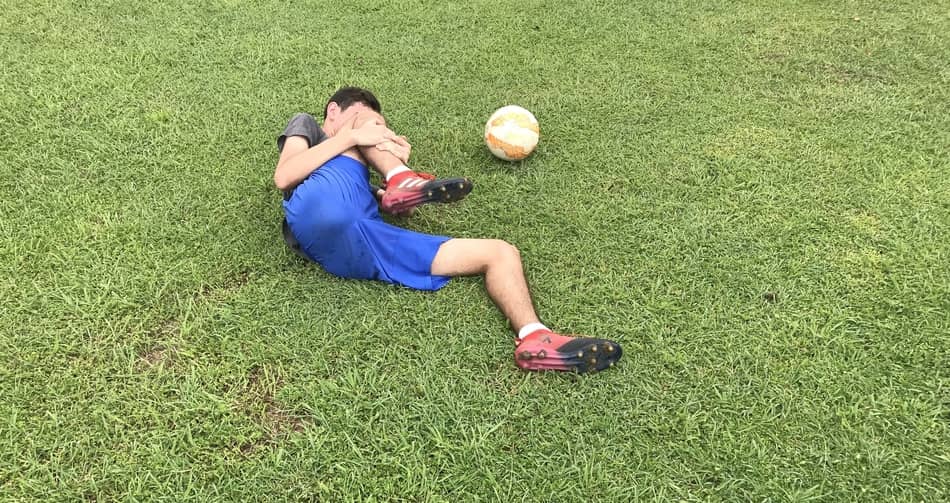
High heat
This is the thing that I find the most unpleasant regarding playing on turf. Since turfs are constructed of mainly rubber and synthetic components, surface temperatures can exceed the range of 35 to 55 degrees from the ambient temperature on summer days. That means that in a normal afternoon temperature of 70deg (21deg celsius) and the surface of the turf can reach 115 degrees (46deg Celsius).).
I indeed live in a place where the temperature average is 95deg Fahrenheit (35deg Celsius) during the daytime. I’ve been forced to play several times in mid-day on turf fields with that temperature and I can tell you that it was hell. It was evident that the heat was on the surface right in the distance in front of you. The temperature on that field might likely be as high as 130 deg (54deg Celsius) on the days.
Extreme temperatures can be hazardous, to say the least. It can lead to dehydration, slower reaction times as well as losing consciousness. If you think about it is why it should not be allowed play on the turf at these temperatures.
Unnatural Bounce and Ball Movement
If you are playing with turf it can be difficult to determine which direction the ball will take it, it’s not normal and unpredictable. This is also true for passes. What would be an effective pass on the grass field could turn into an imprecise and incredibly quick move on turf. This is why the match can be a bit uncontrolled by either side.
Abrasive Surface
Due to the high contact in the surface skin, abrasions to the skin are 3 times more likely to occur on turf as compared to grass. It makes sense when you consider that soccer is a sport where you must slide frequently, particularly goalkeepers. It doesn’t take many slides to get abrasion and each time that you fall or come into contact with the surface it’s going to occur.
The game has a significant change in this regard. Why? Because it’s impossible to slide. You can however in case you don’t want to risk burning your skin, it’s best to avoid doing it. This can never be removed from the natural grass field. The pleasant feeling of making a perfect slide tackle in a moist field. It is a thing that is unable to recreate turf.
Exaggerated pace towards the ball
While watching the “ESPN SportScience” documentary on this topic one of the things that struck me was the fact that Artificial Turf has a coefficient of restitution that is 28% more than natural grass. That means for each contact that the ball makes with the surface it will be able to retain an increased percentage of its initial speed.
This is the reason I have mentioned earlier that the artificial turf soccer game is far too fast in comparison to a game played on grass. The ball simply moves at a high speed and makes every part of the game shift the way you touch the ball as well as the shooting and also the passing method. It’s as if it was playing in a completely different game. It’s harder to complete everything.
Based on the document If you miss the time of a shot onto the turf with 0.1 seconds, it could be off the mark by up to 11 feet! It’s amazing how poor turf will be used for soccer.
Benefits and Disadvantages of Grass
Indoor Soccer Balls
| Image | Name | Description |
|---|---|---|
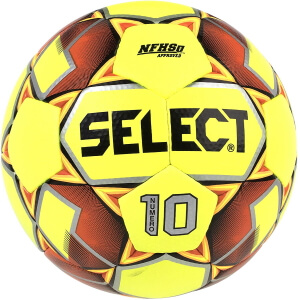 | SELECT NUMERO 10 | This is a turf training ball. It can be used on artificial grass or synthetic turf. It has a durable grainy polyurethane surface. The bladder is made of rubber and has a good balance. The design is bright and clean. It is easy to maintain as the surface is stain resistant. It has hand stitched panels. |
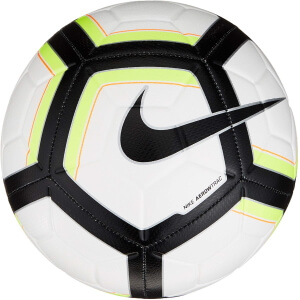 | NIKE STRIKE | The panels of these balls are hand-stitched together. The PVC cover is soft and handles well when you are passing or running. The ball is one of the best soccer balls made for artificial grass surfaces. It is bright so it can be seen for long distances as you strive to reach the goal or receive a pass. This is good when you are playing a night time game and visibility may be less. It is designed well so that it responds well to foot movement. The smooth and firm surface of the artificial grass surface does not cause too much wear and tear on the ball. The ball remains bright because of the special surface which does not absorb stains. These may be one of the best choices to buy the best soccer ball for the artificial grass surface. The even air pressure inside the ball makes sure that it will respond exactly as you wish during a high tension match. With the prominent logo, the ball is visible at all times. The ball keeps its shape even with repeated use over the years. |
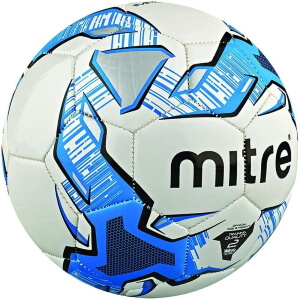 | MITRE IMPEL | This brand has been around for 200 hundred years. They have many types of balls and are marked clearly with grass, turf or other surfaces that they are meant to be played on. The surface is made of 12 panels. The balls are very responsive and follow through on your foot movement. They may be the best soccer ball for artificial grass. They are attractively designed to provide precise reaction from you as a player. |
My Bold Opinion and Experience
Luckily, I was given the chance of having chance to play on both playing surfaces. I was born in Panama, a nation where the majority of soccer fields are turf pitches. The Panama nation’s soccer league is in constant debate and conflict, demanding for the building of naturally grass soccer arenas like any professional top league would require.
I had the chance to play at the top grass playing fields of IMG Academy in Florida, and I must say that the experience was quite different. It’s like playing another sport. In a nutshell, I would say that it feels soft, smooth, and accurate. That’s why I decided to write this post trying to explain in words the differences between these two kinds of surfaces.
But, I do have a lot of gratitude for the artificial turf fields because, thanks to them, could develop my skills playing soccer from the time I was an infant. They provide a solution to the only issue that natural grass fields face which is the need for maintenance. Turf fields have assisted in the development of soccer talent across the world due to the value they provide, which is to build a good quality pitch at a low cost and not have to maintain it continuously. it.
In conclusion, I am convinced that if we can improve the preparation of future soccer players It is essential to create greater natural grass fields. The existence of grass pitches is not an alternative, it is rather an essential requirement to develop soccer players at the elite level. In the long term, you will avoid injuries that can last forever and could develop the sport in the most “natural” method instead of the “artificial” method.